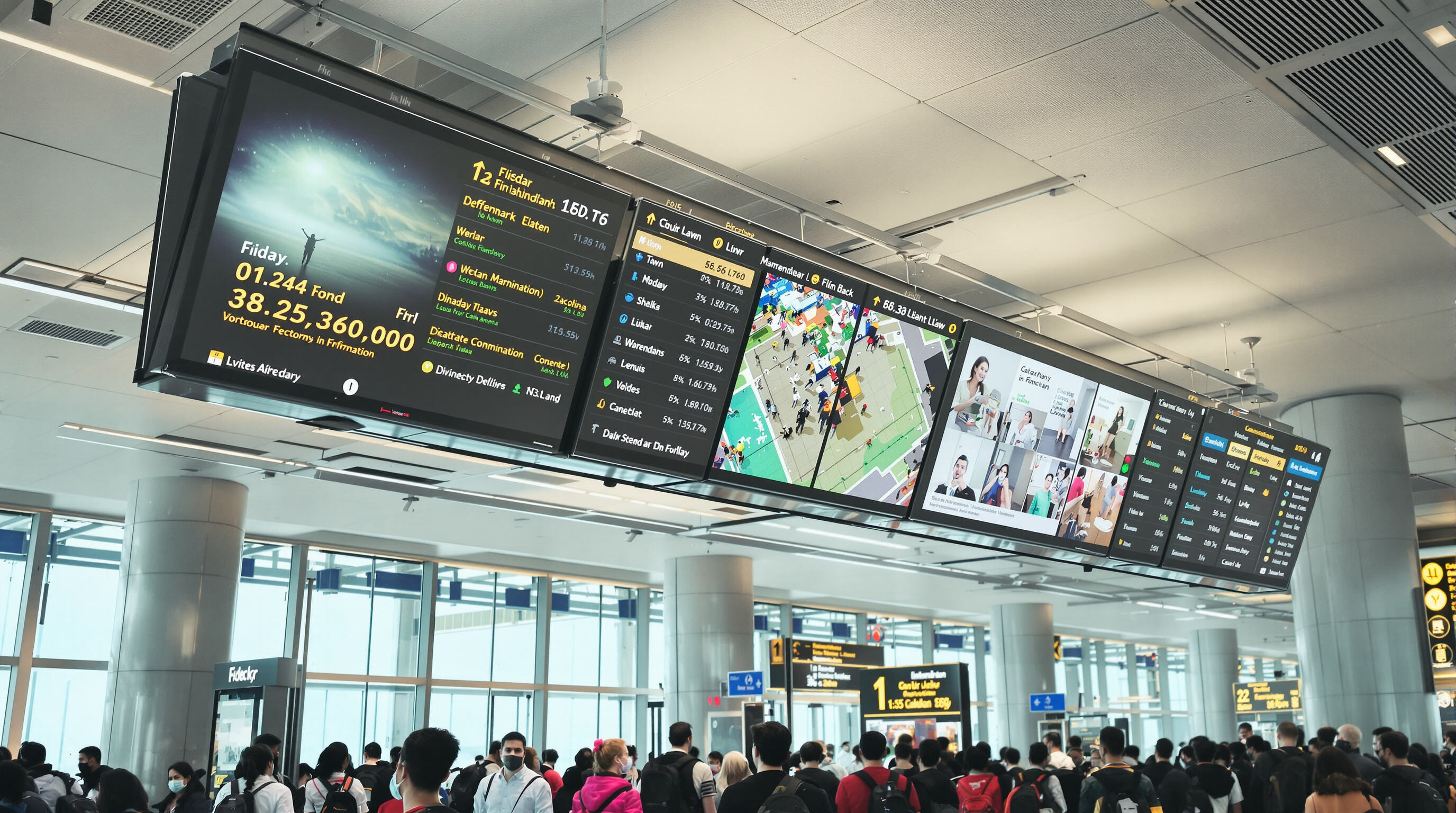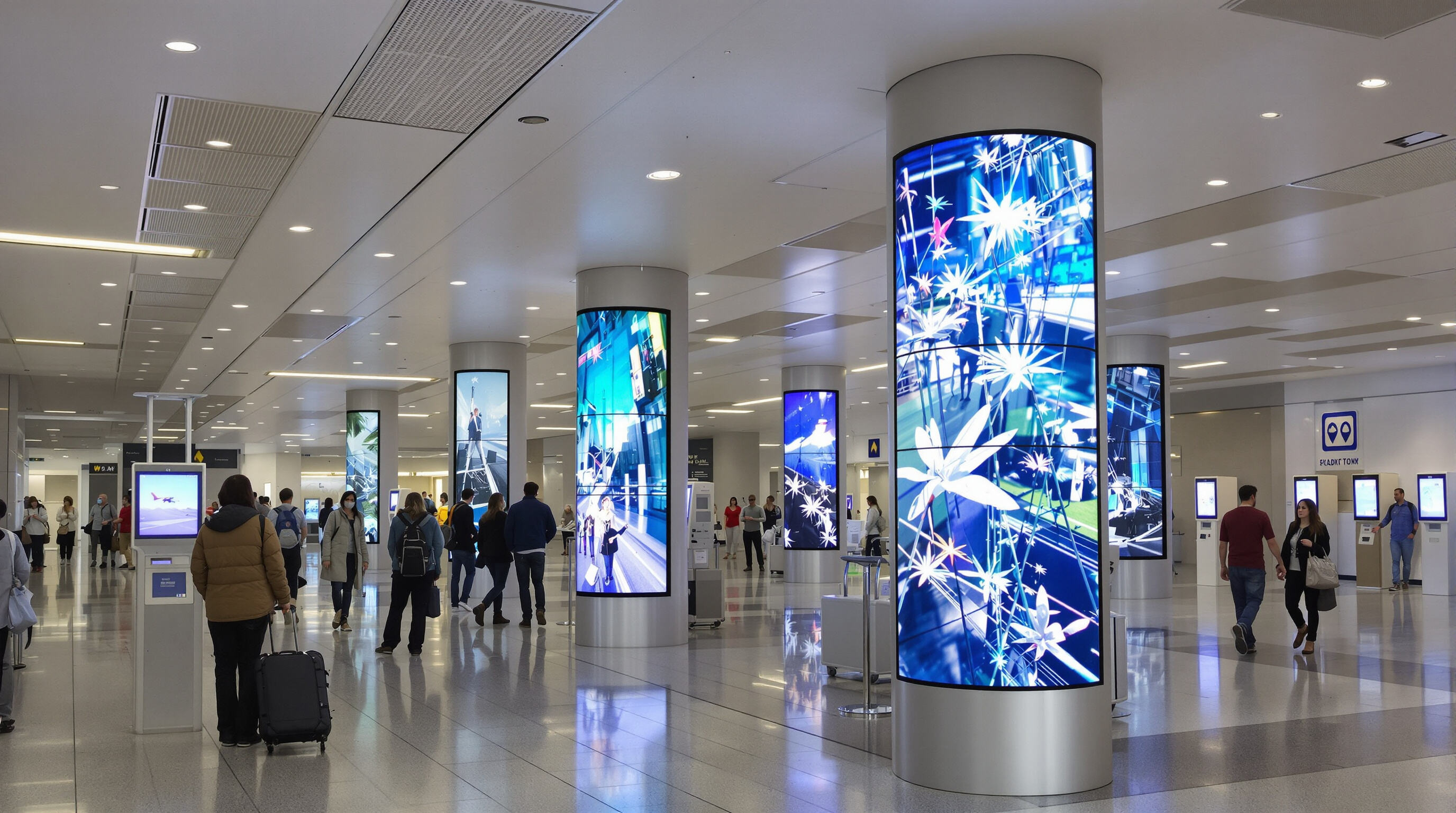The Navigation Challenge in Modern Airports and the Role of Indoor Fixed LED Display Systems
Growing Complexity of Airport Layouts and Passenger Navigation
Modern terminals now span over 1 million square feet, featuring multi-level concourses, satellite gates, and hybrid retail-transit zones. Since 2020, over 65% of airports globally have expanded (ACI data), creating complex environments where 33% of passengers report navigation difficulties despite existing signage.
Rising Passenger Volumes and Terminal Congestion
Global air travel surpassed 4.7 billion passengers in 2023, straining legacy wayfinding systems. Peak-hour densities at major hubs reach 8.7 people per square meter—a 140% increase from pre-pandemic levels—rendering static signage inadequate for real-time crowd management.
Limitations of Traditional Wayfinding Signage
- Visibility Constraints: Static signs are effective only within 15-meter sightlines
- Update Delays: 78% of airports still manually replace printed gate assignments
- Multilingual Gaps: Only 41% provide non-English directions
- Maintenance Costs: Medium-sized airports spend over $740k annually on sign upkeep (Ponemon 2023)
How Indoor Fixed LED Display Systems Address Key Pain Points

High-brightness LED panels (1,500+ nits) offer 180° visibility beyond 50 meters, while centralized content management systems (CMS) update gate changes in under three seconds. Deployments in major international airports have reduced average wayfinding time by 40% through:
| Feature | Impact |
|---|---|
| Real-time synchronization | 22% fewer missed flight alerts |
| Multilingual toggles | 94% traveler comprehension rate |
| Predictive analytics | 17% faster crowd dispersal |
Modular designs allow vertical or horizontal scaling without structural modifications, enabling adaptation to fluctuating passenger volumes.
Designing Intelligent Wayfinding Solutions with Interactive LED Video Walls

Integrating Digital LED Displays into Airport Infrastructure
Indoor fixed LED displays are increasingly embedded into walls, pillars, and flooring as architectural features. Their thin-profile design (≤2.5” depth) and glare-resistant surfaces integrate seamlessly into terminal aesthetics. At a major European hub, corridor-mounted LED guides with 2,500-nit brightness that adapt to ambient light improved orientation for 87% of travelers.
Leveraging Real-Time Data and Smart Guidance with LED Technology
Airports are now using LED systems that connect to their databases so travelers can see where gates are assigned, how long they might wait for security checks, and when bags will arrive at claim areas. A recent study from SITA back in 2023 found something interesting too these digital signs cut down on people asking questions at service counters by almost two thirds. When things get chaotic at the airport, those big LED walls show colored arrows pointing folks in different directions. This helps move crowds along better during problems like flight delays or cancellations. Some Asian airports tested this system and saw a pretty good drop in crowding during busy times about 28 percent less congestion overall.
AI-Powered Navigation Algorithms in Interactive Kiosks
Touch-enabled LED kiosks process 14.7 million daily queries using machine learning to predict walking speeds, prioritize tight-connection routes, and adjust accessibility recommendations. Early adopters report boarding processes up to 40% faster due to personalized pathfinding.
Optimizing User Experience for Diverse Travelers
Multi-lingual interfaces support at least 12 languages, while ADA-compliant audio guides enhance accessibility. Tactile LED floor markers help vision-impaired travelers navigate 22% faster than traditional Braille signs. Variable screen heights (4’–7’) ensure visibility for both seated and standing passengers.
Strategic Deployment and Integration of Dynamic Digital Signage Across Terminals
Optimal Placement of Indoor Fixed LED Displays for Maximum Visibility
Most modern airports now have those big LED screens installed right where passengers need them most security checkpoints, baggage claim zones, and busy corners between terminals. These displays sit around eye level for most adults, usually between 2.1 and 2.4 meters high, and come with special coatings that cut down on glare so people can actually read them even when sunlight hits the glass. Airport designers run sightline tests to make sure everyone from kids to wheelchair users can see what's displayed. And interestingly enough, many of these digital signs blend into the building architecture thanks to clever bezel designs that match surrounding materials instead of sticking out like sore thumbs.
Synchronizing Real-Time Flight and Gate Information on LED Boards
Modern LED boards update gate assignments and delay alerts within 15 seconds of Air Traffic Control changes. This real-time synchronization has reduced passenger inquiries at information desks by 37% in recent deployments. Integration with airport operational databases via XML/API feeds enables proactive messaging during irregular operations.
Connecting LED Displays to Central Airport Management Systems
A centralized CMS allows simultaneous content updates across more than 500 displays, with local override capability for emergencies. When a display shows “Gate Closing,” synchronized PA announcements and mobile app notifications activate simultaneously. SD-WAN configurations ensure sub-100ms latency for seamless system-wide coordination.
Ensuring Accessibility, Multilingual Support, and System Reliability
The displays feature accessible 18 point sans serif fonts that meet ADA standards, along with eight different languages available either through automatic detection using beacon tech or by manual selection when needed. For reliability, these screens come equipped with redundant power sources including PoE++ backups plus LTE as a fail safe option, ensuring almost constant operation even at busy terminals handling well over 200 thousand travelers each day. Brightness adjustments happen automatically throughout the day cycle from morning light until nightfall, which helps save around thirty one percent in electricity costs compared to those old fashioned static lighting setups.
Measurable Improvements in Passenger Experience and Operational Efficiency
Reducing Passenger Navigation Time with Digital Wayfinding
Indoor fixed LED displays have reduced average navigation time by 40%, according to a 2023 aviation technology survey. Animated route maps and real-time gate alerts on corridor-mounted screens help travelers reach gates 25% faster than with static signage.
Decreasing Congestion Through Smarter Traffic Flow Management
Security checkpoint congestion dropped by 32% after deploying predictive LED guidance. Machine learning algorithms analyze data from over 500 foot traffic sensors to display alternate routes on overhead screens 8–10 minutes before bottlenecks occur.
Enhancing Traveler Satisfaction: Survey Insights and Feedback
Post-deployment surveys show an 87% satisfaction rate with LED wayfinding systems. Automatic display of 16 languages based on flight origin data reduced confusion among international travelers by 41% compared to previous poster-based multilingual systems.
Long-Term Benefits of LED-Based Wayfinding for Airport Operators
Remote content management cut signage labor costs by 68%, while adaptive brightness controls reduced annual energy consumption by 22%. Over five years, airports report 18% fewer staff interventions for directions and 27% faster terminal evacuation times during emergency drills.
FAQ Section
Why are modern airports increasingly using LED display systems?
Modern airports use LED display systems to improve passenger navigation and manage increasing travelers efficiently. They offer better visibility, real-time updates, and multilingual support compared to static signs.
What are the advantages of using LED technology for wayfinding?
LED technology provides enhanced visibility over long distances, real-time updates, adaptive brightness settings, and multilingual options. It is more cost-effective due to reduced manual labor and energy consumption.
How do LED systems impact airport congestion?
LED systems help manage and reduce congestion by providing real-time direction guidance, displaying information promptly, and using predictive analytics to preemptively manage crowd bottlenecks.
Are LED display systems accessible to all passengers?
Yes, modern LED systems are designed with accessibility in mind, featuring ADA-compliant fonts, multi-language support, audio guides, and tactile markers for vision-impaired travelers.
Table of Contents
- The Navigation Challenge in Modern Airports and the Role of Indoor Fixed LED Display Systems
- Designing Intelligent Wayfinding Solutions with Interactive LED Video Walls
- Strategic Deployment and Integration of Dynamic Digital Signage Across Terminals
- Optimal Placement of Indoor Fixed LED Displays for Maximum Visibility
- Synchronizing Real-Time Flight and Gate Information on LED Boards
- Connecting LED Displays to Central Airport Management Systems
- Ensuring Accessibility, Multilingual Support, and System Reliability
- Measurable Improvements in Passenger Experience and Operational Efficiency
- FAQ Section




